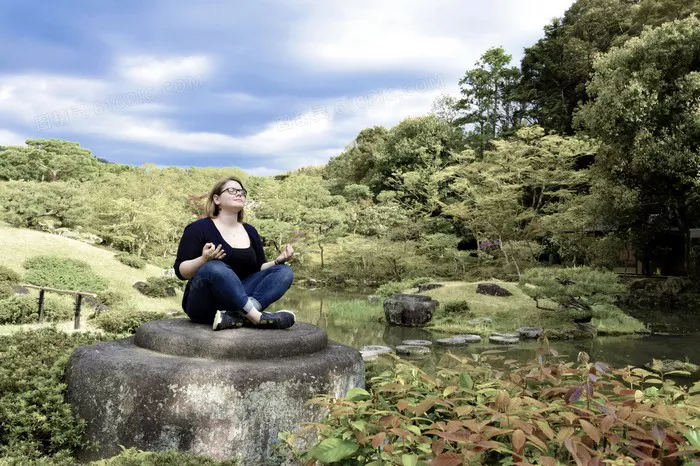Sun Salutation, or Surya Namaskar in Sanskrit, is one of the most revered practices in yoga. It is more than just a sequence of physical postures; it is a deeply symbolic, spiritual, and philosophical practice that aligns the body, mind, and spirit. While often practiced as a warm-up or an exercise routine, its roots lie in ancient traditions that honor the sun, the source of life and energy. Understanding the philosophy behind Sun Salutation helps practitioners cultivate mindfulness, gratitude, and inner harmony.
The Spiritual and Symbolic Meaning of Sun Salutation
In yogic philosophy, the sun represents consciousness and spiritual illumination. Ancient yogis recognized the sun as a divine force that sustains all life on Earth. The Sun Salutation is, therefore, a form of devotion and gratitude to this powerful energy. Each movement and breath in the sequence is intended to cultivate awareness, balance energy, and connect with the greater cosmos.
The practice of Sun Salutation is also linked to the concept of prana, or life force. By synchronizing breath with movement, practitioners enhance the flow of prana in the body, promoting vitality and inner peace. The practice is often performed at sunrise, symbolizing renewal, clarity, and the opportunity for personal growth.
The Philosophical Roots of Sun Salutation
The philosophy of Sun Salutation is deeply embedded in traditional yogic texts and Hindu scriptures. Some of the fundamental principles that guide this practice include:
1. Gratitude and Devotion
- The sun has been worshiped in various cultures as a giver of life and a symbol of divine power. In Hinduism, Surya, the sun god, is associated with health, prosperity, and spiritual enlightenment. Sun Salutation is a way to express gratitude for the energy and sustenance that the sun provides.
- Practicing Sun Salutation with a devotional attitude helps cultivate humility and appreciation for nature and life.
2. The Balance of Opposites (Hatha Yoga Philosophy)
- The word “Hatha” in Hatha Yoga means the balance of the sun (Ha) and the moon (Tha). Sun Salutation represents this balance between opposing forces—light and dark, action and stillness, inhalation and exhalation.
- By practicing Sun Salutation, yogis aim to bring equilibrium to their physical and mental states.
3. Self-Discipline (Tapas)
- Tapas, or self-discipline, is a core concept in yoga philosophy. The daily practice of Sun Salutation requires dedication and effort, which strengthens willpower and determination.
- Regular practice instills discipline in one’s lifestyle, helping to create consistency and structure in life.
4. Union of Body, Mind, and Spirit
- Yoga means union, and Sun Salutation is a holistic practice that integrates body movement, breath control, and mental focus.
- The sequence of postures, performed mindfully, creates a meditative flow that enhances self-awareness and spiritual connection.
5. Karma Yoga – The Path of Action
- In the Bhagavad Gita, Karma Yoga is described as the path of selfless action. Sun Salutation is a physical expression of Karma Yoga, as it encourages practitioners to dedicate their practice to a higher purpose.
- Performing Sun Salutation with the right intention allows practitioners to cultivate positive energy and contribute to the well-being of others.
The Psychological and Emotional Benefits
Sun Salutation is not only a physical exercise but also a practice that nurtures mental and emotional well-being. From a philosophical perspective, it helps practitioners develop:
Mindfulness: By focusing on breath and movement, Sun Salutation anchors the mind in the present moment.
Inner Strength: The repetitive nature of the sequence builds resilience, both physically and mentally.
Emotional Release: The dynamic movements help release stored tension, promoting emotional balance.
Increased Self-Awareness: Regular practice fosters a deeper understanding of oneself, leading to self-growth and transformation.
The Sun Salutation Sequence and Its Philosophical Significance
A traditional Sun Salutation consists of 12 postures, each with its own meaning:
Pranamasana (Prayer Pose) – Symbolizes humility and devotion.
Hasta Uttanasana (Raised Arms Pose) – Represents expansion and receptivity.
Uttanasana (Standing Forward Bend) – Encourages surrender and introspection.
Ashwa Sanchalanasana (Equestrian Pose) – Signifies readiness and strength.
Dandasana (Plank Pose) – Builds determination and endurance.
Ashtanga Namaskara (Salutation with Eight Parts of the Body) – Reflects surrender and respect.
Bhujangasana (Cobra Pose) – Opens the heart, symbolizing transformation.
Adho Mukha Svanasana (Downward-Facing Dog Pose) – Encourages introspection and grounding.
Ashwa Sanchalanasana (Equestrian Pose, other side) – Reinforces balance and focus.
Uttanasana (Standing Forward Bend) – Encourages release and relaxation.
Hasta Uttanasana (Raised Arms Pose) – Welcomes new energy and inspiration.
Pranamasana (Prayer Pose) – Completes the cycle with gratitude.
Each pose represents a journey through different aspects of life—strength, surrender, renewal, and gratitude.
Conclusion
The philosophy of Sun Salutation extends far beyond the physical movements. It is a profound practice rooted in ancient traditions, embodying gratitude, discipline, balance, and spiritual awakening. By practicing Sun Salutation with awareness and reverence, yogis not only strengthen their bodies but also nurture their minds and spirits. Whether performed as a morning ritual or as a meditative practice, Sun Salutation serves as a reminder of the interconnectedness of life and the power of conscious movement. Through this practice, we learn to greet each day with gratitude, openness, and a deeper connection to the universe.
Related Topics:




















